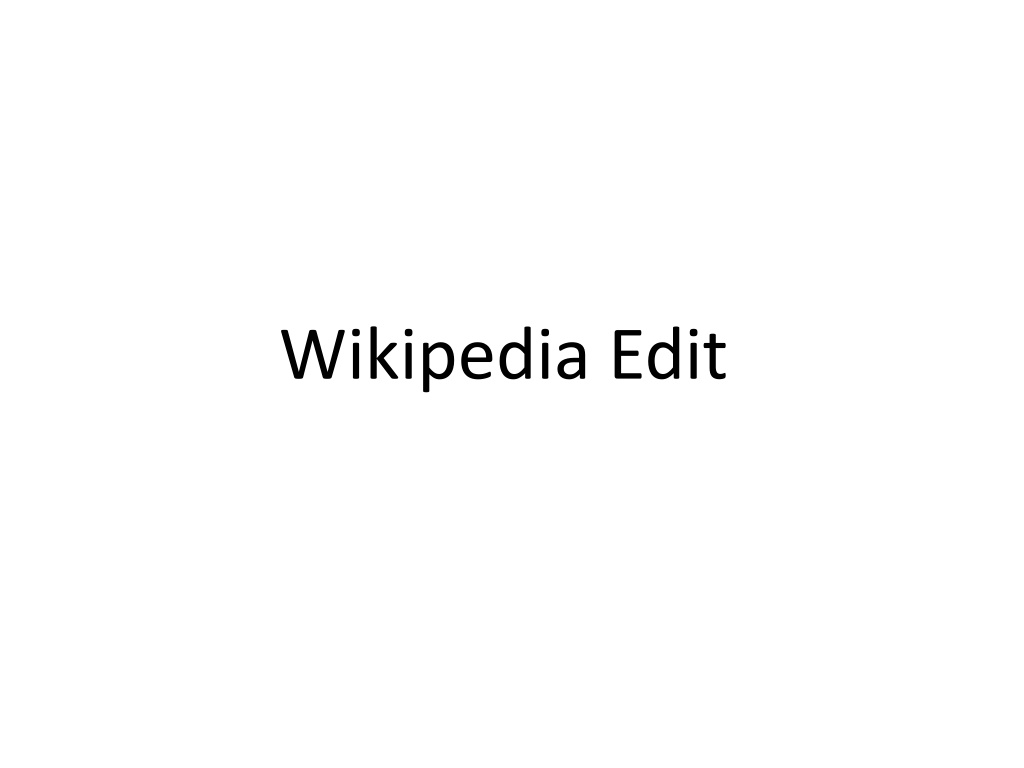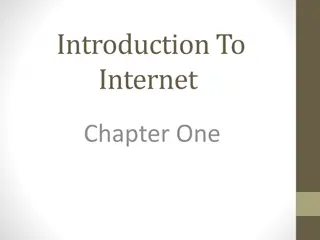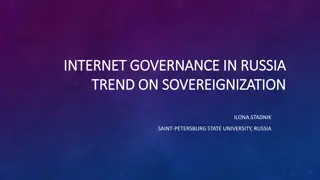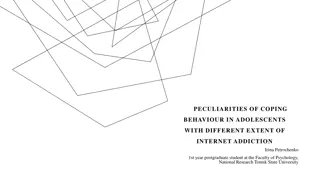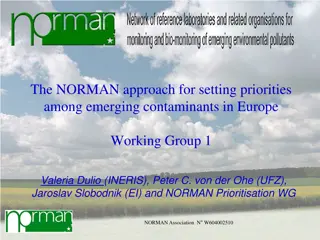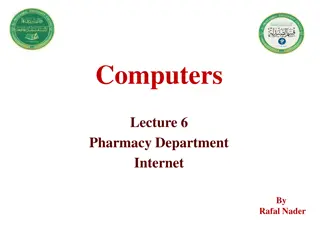Exploring Internet of Things and Emerging Technologies
The concept of Internet of Things (IoT) is transforming everyday objects by enabling them with software, sensors, and network connectivity. This allows for remote control, communication between devices, and data sharing. With the IoT expected to consist of nearly 50 billion objects by 2020, advancements such as IPv6, 6LoWPAN, and Fog Computing are being introduced to support this surge in internet-connected devices. These technologies aim to enhance efficiency, improve data processing capabilities, and address the limitations of current networking protocols.
Download Presentation

Please find below an Image/Link to download the presentation.
The content on the website is provided AS IS for your information and personal use only. It may not be sold, licensed, or shared on other websites without obtaining consent from the author. Download presentation by click this link. If you encounter any issues during the download, it is possible that the publisher has removed the file from their server.
E N D
Presentation Transcript
Internet of Things It is the idea of enabling everyday objects with software, sensors and network connectivity. The connectivity would not only allow you to control them from afar but will also allow them to communicate and share data with each other. Google s Nest Learning Thermostat, can tell when you leave the house and lower the temperature accordingly so as not to waste energy. It can learn and adapt itself according to your routine and adjust temperature accordingly.
My edit Yes! It is still there.
What did the edit add to the topic? It is estimated that the IoT will consist of almost 50 billion objects by 2020. Since the internet lies at the core of IoT, the section on Network Architecture provides information on how will the architecture supporting this surge of internet connected devices look like.
IPv6 Internet Protocol version 6 (IPv6) is the most recent version of the IP, the communications protocol that provides an identification and location system for computers on networks and routes traffic across the Internet. Since the IPv4 addresses are about to get exhausted, it is being gradually replaced by IPv6. IPv6 uses a 128-bit address, allowing 2128, or approximately 3.4 1038 addresses, or more than 7.9 1028 times as many as IPv4, which uses 32-bit addresses and provides approximately 4.3 billion addresses.
6LoWPAN 6LoWPAN is an acronym of IPv6 over Low power Wireless Personal Area Networks. The concept originated from the idea that the Internet Protocol could and should be applied even to the smallest devices" and that low-power devices with limited processing capabilities should be able to participate in the IoT. It has defined header compression mechanisms that allow IPv6 packets to be sent and received over low rate networks.
Fog Computing Fog computing, also known as fogging, is a distributed computing infrastructure in which some application services are handled at the network edge in a smart device and some application services are handled in a remote data center, in the cloud. The goal of fogging is to improve efficiency and reduce the amount of data that needs to be transported to the cloud for data processing, analysis and storage. This is often done for efficiency reasons, but it may also be carried out for security and compliance reasons.
Fog Computing In a fog computing environment, much of the processing takes place in a data hub on a smart mobile device or on the edge of the network in a smart router or other gateway device. This distributed approach is growing in popularity because of the Internet of Things (IoT) and the immense amount of data that sensors generate. It is simply inefficient to transmit all the data a bundle of sensors creates to the cloud for processing and analysis; doing so requires a great deal of bandwidth.
References http://www.3g.co.uk/PR/Feb2015/internet-of- things-everything-you-need-to-know.html https://en.wikipedia.org/wiki/Internet_of_Things http://www.computer.org/cms/Computer.org/Comp utingNow/issues/2015/07/mit2015030002.pdf https://en.wikipedia.org/wiki/Fog_computing https://en.wikipedia.org/wiki/6LoWPAN https://en.wikipedia.org/wiki/IPv6 http://whatis.techtarget.com/definition/fog- computing-fogging
